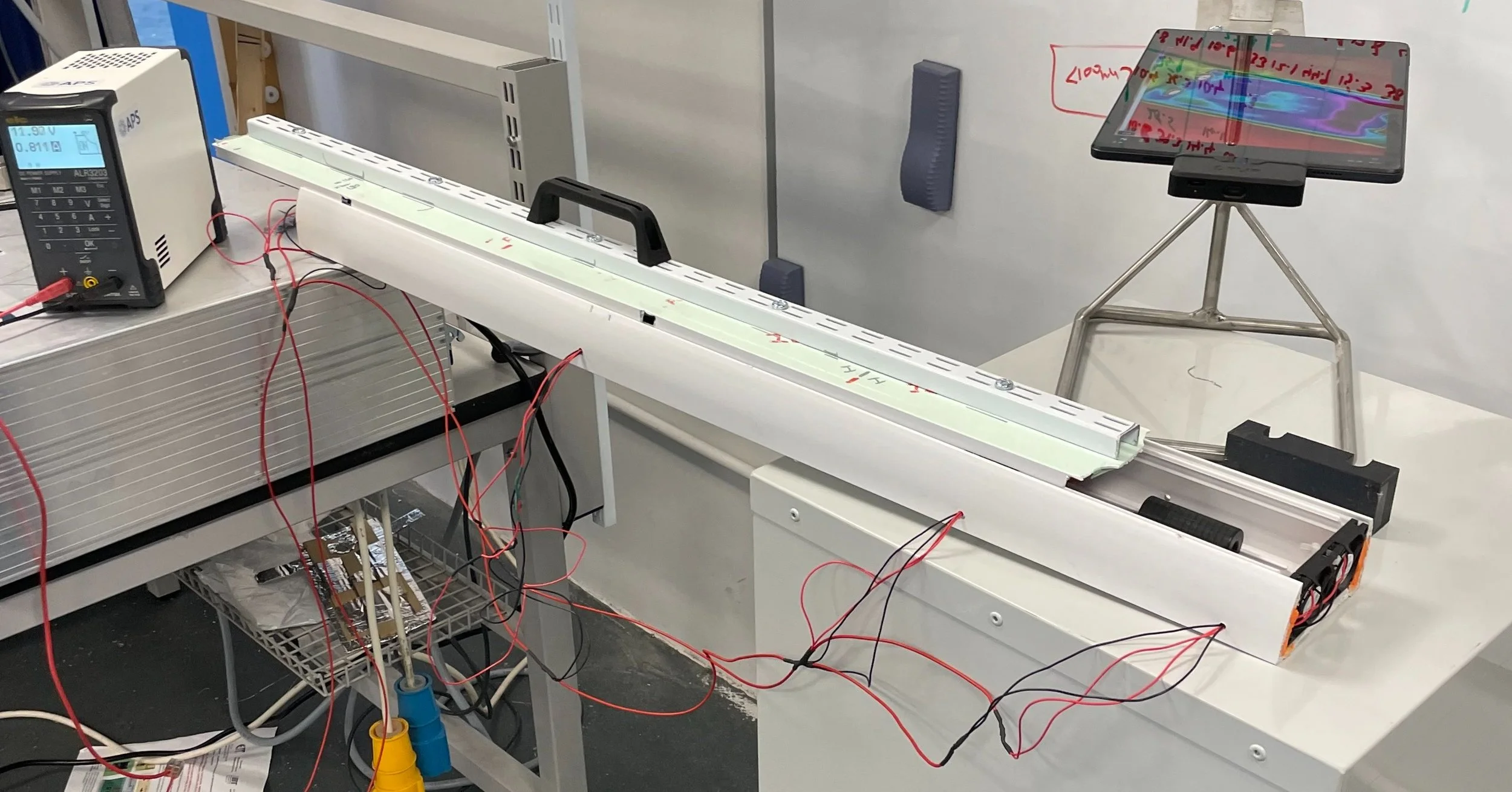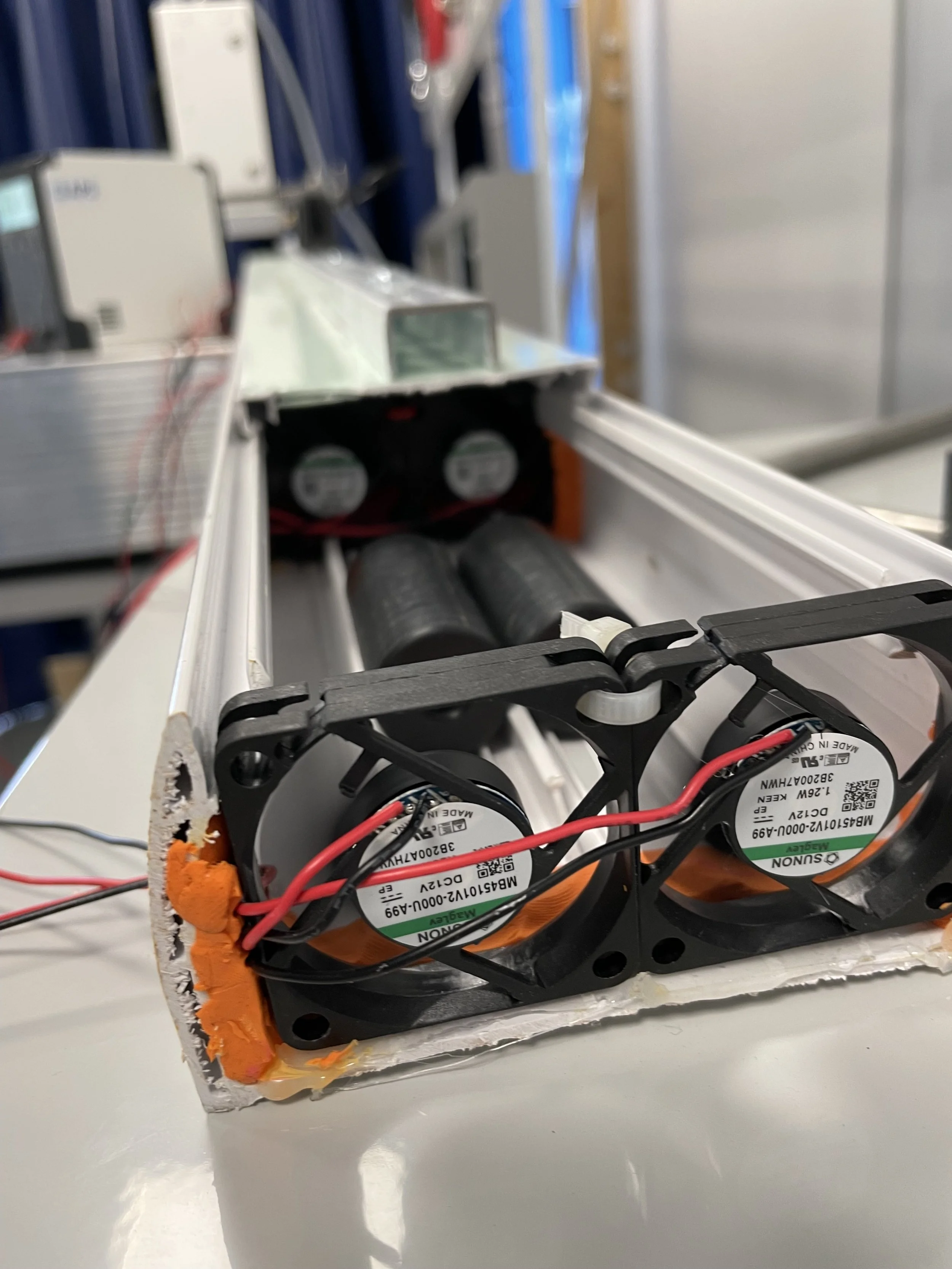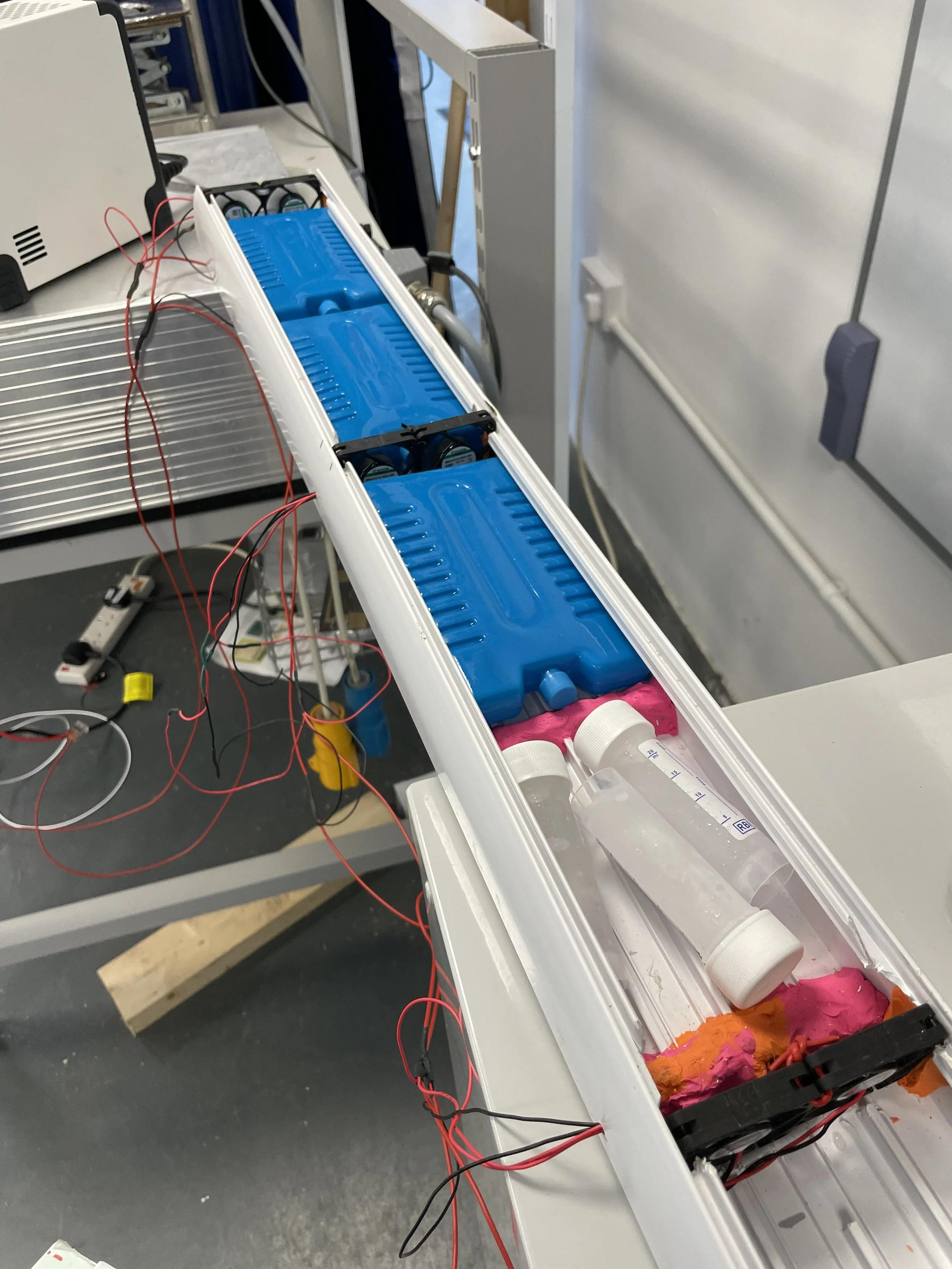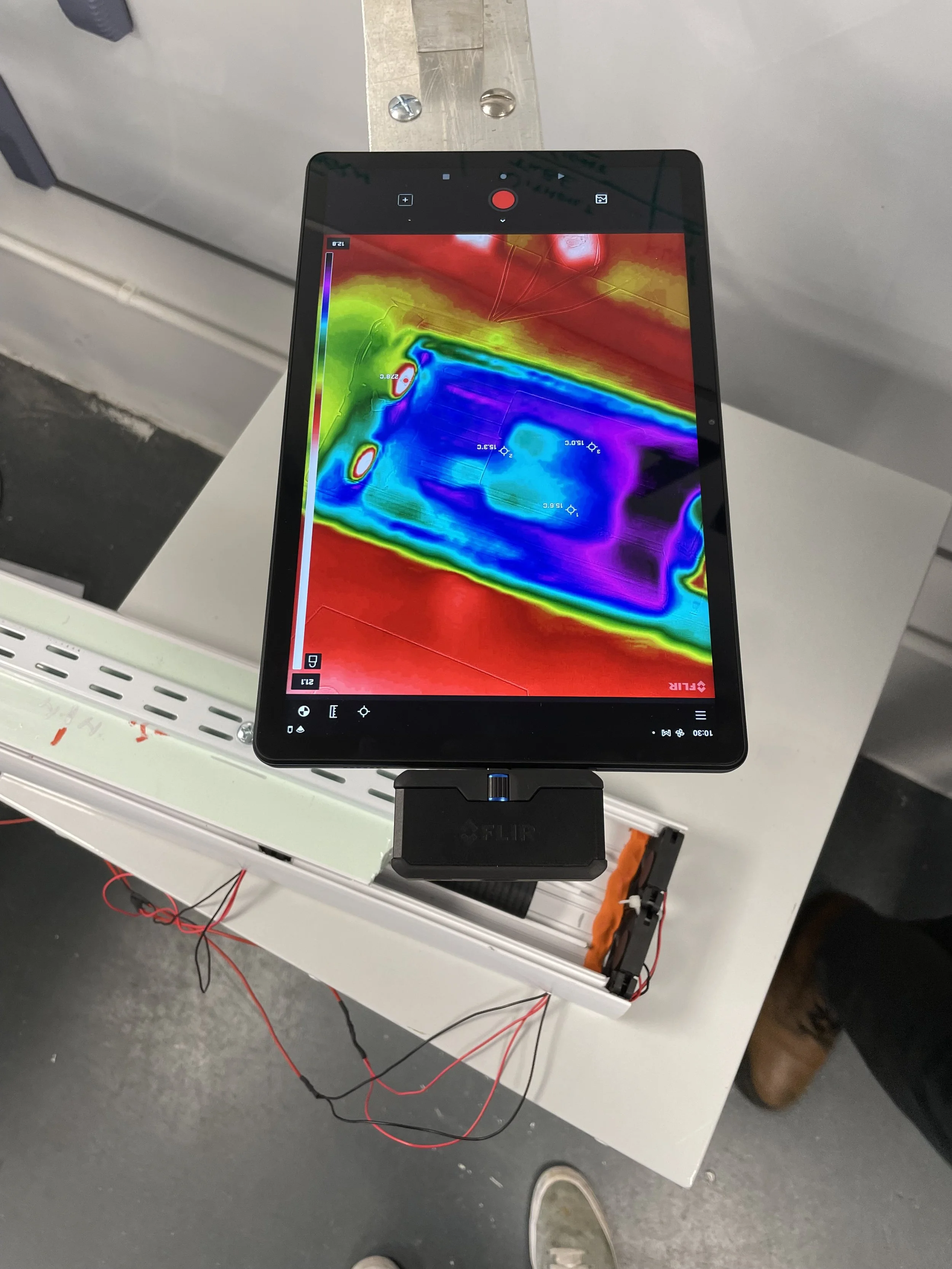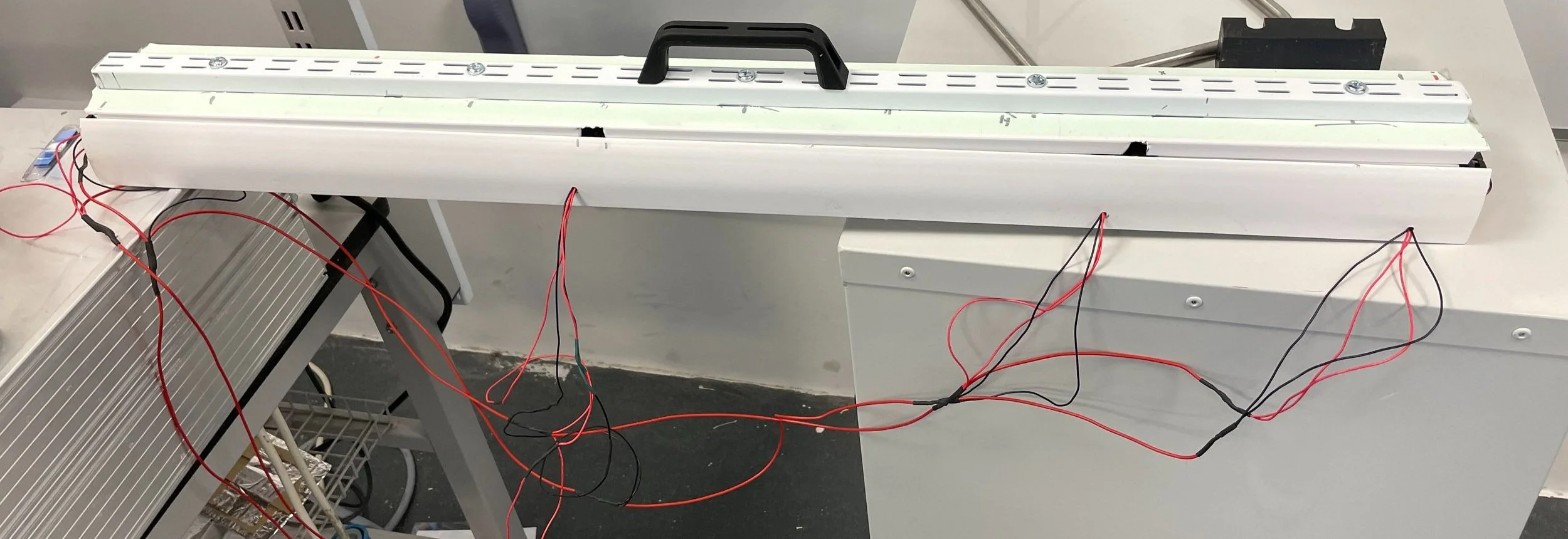Lice Icer - Experimental Apparatus
This was an experimental apparatus I created during my time with Atlantic Photonic Solutions studying the effects of UV and temperature on sea lice (sea lice are a pest and are present in many salmon farms causing negative effects on the fish). This apparatus allows you to put blocks of ice in an enclosed space with a sample of sea lice in order to decrease their temperature. There are four sets of fans, each with two fans, that push the cold air coming from the blocks of ice down the tube over the sea lice where they sit at the end of the tube. The tube was made from a leftover wire conduit I found in the building. The power to the device was supplied by a mobile, variable-voltage power supply. The experiment involves chilling the lice while they are treated with a certain dose of UV. While the lice are chilled and treated with UV, the dose of UV and the temperature of the lice are recorded. The temperature of the lice was monitored using a thermal camera above where the lice would be placed. (The thermal camera used in the actual experiment was a significantly higher quality one than the one seen on the right of the image below.) The mortality rate of the lice at different UV doses and temperatures was recorded as well. The goal of this experiment was to determine if the lice were dying due to receiving a certain dose of UV or if they were dying from reaching a certain temperature. The experiment yielded interesting results but due to a confidentiality agreement, I am unable to disclose the results of the experiment on this page.
Apparatus Testing Images
Seen below are three images from the initial testing phase which involved testing the apparatus itself to see how much it is able to cool an object where the sea lice would be placed. During the actual experiment, the UV light source would be placed where the tablet and thermal camera are shown in the image on the right. The higher-quality thermal camera was then placed slightly off to the side looking at the lice below the light.
Here you can see down the tube where the cold air flows. The two black cylinders directly behind the fans at the bottom of the image are sitting where the lice would be placed in a pitri dish.
This is a view of the thermal imaging being done of the two black cylinders. The cylinders were used to test the apparatus to see how much it was able to cool down an object in the position where the lice would eventually sit.
Here is a view of the apparatus without the top cover where you can see the ice inside. The apparatus was designed to perfectly fit the three light blue ice packs as well as a few frozen tubes of water. the colorful substance is a putty meant to stop any water coming from the ice from htting the fans and wires.
This view shows the apparatus completely closed. the top cover would be slid down slightly during the experiment to place the lice within the tube and place the UV light above the lice and the tube.
